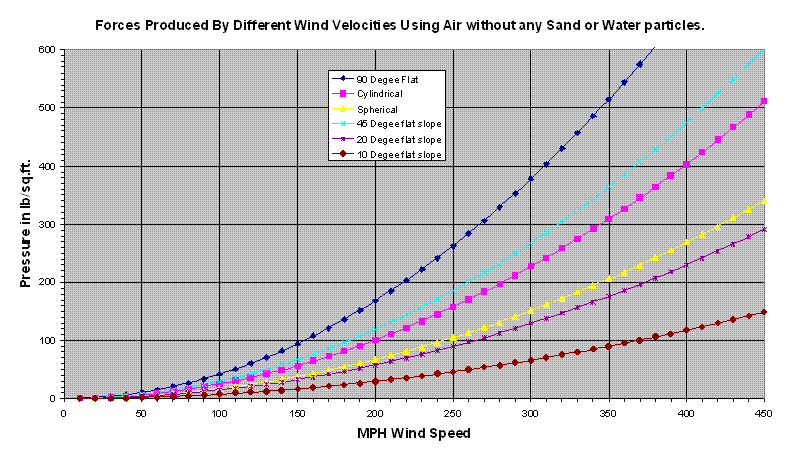
| |
 |
![]()
This report is intended to give a familiarity with the forces of wind. It is intended to aid in the building of polar shift survival quarters by giving
engineering design considerations. The force of wind on the outside of different shape structures is shown in the following chart

Note that a wind at 300 MPH (482 KM/Hr) will exert a pressure of 378 lb/sq ft (2.6 lb/sq inch or 1845 Kg/sq meter or 185 gm/sq cm) and wind
at 400 MPH (672 KM/Hr) will exert a pressure of 672 lb/sq ft (4.7 lb/sq inch or 3280 Kg/sq meter or 328 gm/sq cm) on a 90 degree surface
with respect to wind direction. Other shapes and sloped surfaces result in less surface pressure. A dome would be similar in shape to a sphere.
Note the smaller the angle the wind makes with the surface the less the force.
The formula for pressure in lb/sq ft = (wind speed in MPH)^2 times K where K = .00420. For conversion 100 lb/sq ft = .694 lb/sq inch = 48.8
gm/sq cm = 488 Kg/sq meter and 1 mile/hr = 1.609 KM/hr. This graph was constructed from a table of measured values found in a CRC
handbook of tables for "Applied Engineering Science" (R620.03 CRC) see page 436.
The explanation below the table says: The wind-pressure forces on structures are larger than the impact pressure of the wind, due to suction forces
on the leeward side. The pressures are also higher on tall structures. The net force is usually 40% to 100% higher than that due only to the
stagnation pressure (impact) of the wind. The factor used for the flat plate in the above table is 1.68.
Offered by Mike.